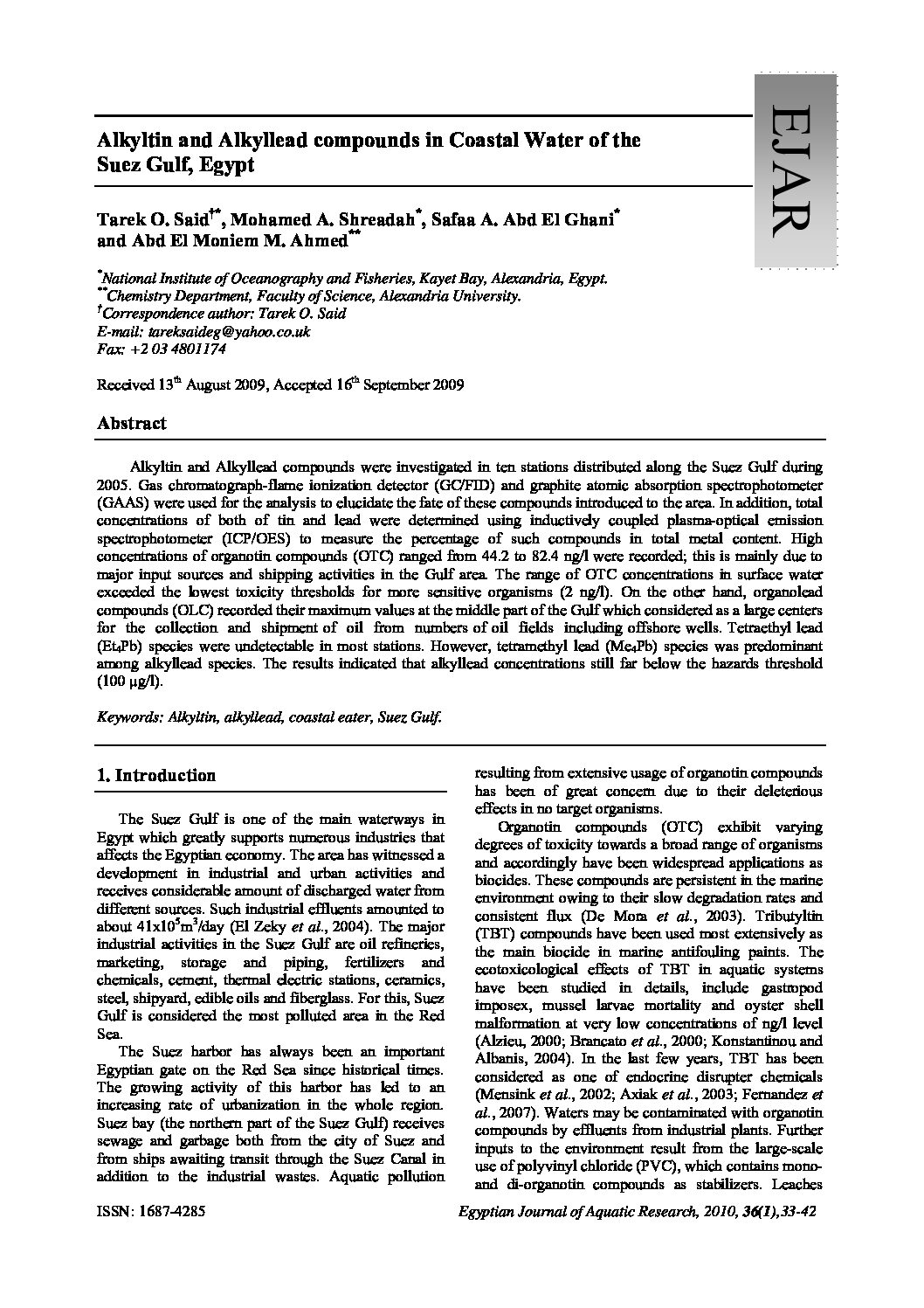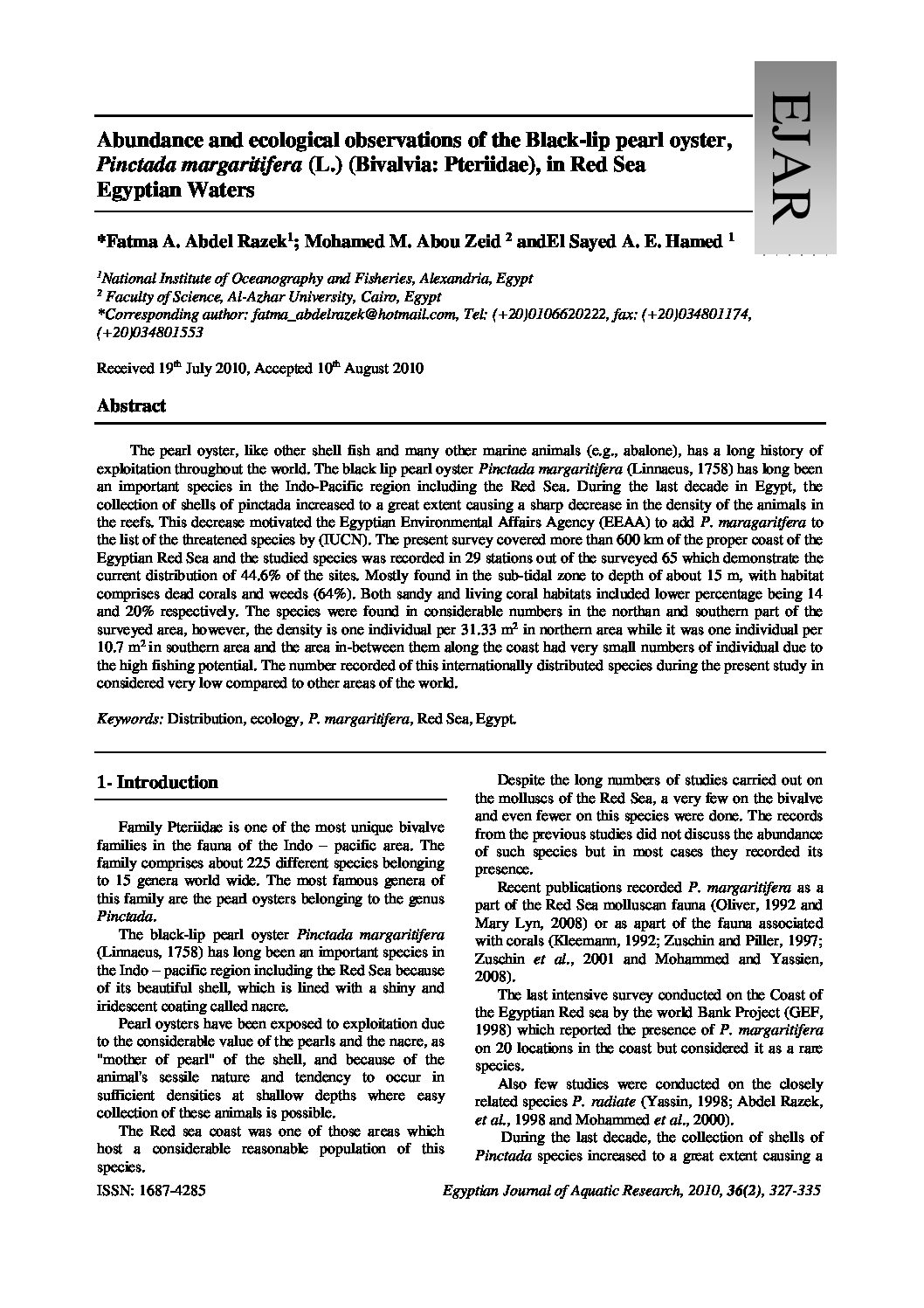Categories
vol-36Alkyltin and Alkyllead compounds in Coastal Water of the
Suez Gulf, Egypt
Tarek O. Said†*, Mohamed A. Shreadah*
, Safaa A. Abd El Ghani*
and Abd El Moniem M. Ahmed**
*
National Institute of Oceanography and Fisheries, Kayet Bay, Alexandria, Egypt. **Chemistry Department, Faculty of Science, Alexandria University.
†
Correspondence author: Tarek O. Said
E-mail: [email protected]
Fax: +2 03 4801174
Received 13th August 2009, Accepted 16th September 2009
Abstract
Alkyltin and Alkyllead compounds were investigated in ten stations distributed along the Suez Gulf during
2005. Gas chromatograph-flame ionization detector (GC/FID) and graphite atomic absorption spectrophotometer
(GAAS) were used for the analysis to elucidate the fate of these compounds introduced to the area. In addition, total
concentrations of both of tin and lead were determined using inductively coupled plasma-optical emission
spectrophotometer (ICP/OES) to measure the percentage of such compounds in total metal content. High
concentrations of organotin compounds (OTC) ranged from 44.2 to 82.4 ng/l were recorded; this is mainly due to
major input sources and shipping activities in the Gulf area. The range of OTC concentrations in surface water
exceeded the lowest toxicity thresholds for more sensitive organisms (2 ng/l). On the other hand, organolead
compounds (OLC) recorded their maximum values at the middle part of the Gulf which considered as a large centers
for the collection and shipment of oil from numbers of oil fields including offshore wells. Tetraethyl lead
(Et4Pb) species were undetectable in most stations. However, tetramethyl lead (Me4Pb) species was predominant
among alkyllead species. The results indicated that alkyllead concentrations still far below the hazards threshold
(100 µg/l).
Keywords: Alkyltin, alkyllead, coastal eater, Suez Gulf.







